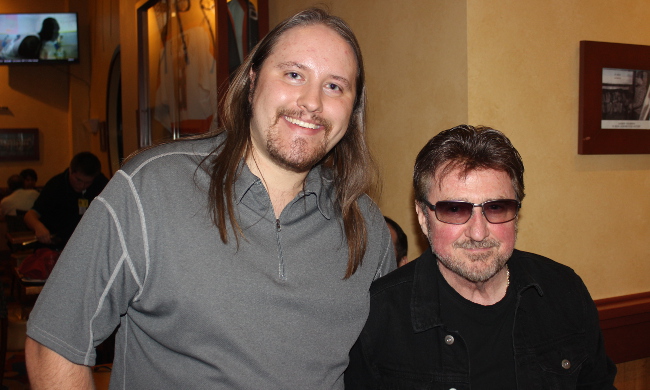From a modern perspective, it may not be immediately recognizable that the classic 1954 monster movie Godzilla was, in many ways, a product of its time. Highlighting the anxiety of the nuclear age at the height of The Cold War, the gargantuan reptile first appears after a hydrogen bomb test in the middle of the ocean. Even this occurrence that starts off the film is based on reality, as the United States tested a giant nuclear weapon on March 1st, 1954, under the code name Castle Bravo. Fishermen, who were outside of the radius, were hit by the fallout from the blast, being covered with copious amounts of coral and radioactive ash. One man died following the event, creating an onslaught of international press that questioned these tests (though, other articles impugned the men on the vessel, suggesting that they were spies).
Written and directed by Ishirô Honda (with the help of scribe Takeo Murata), the filmmaker builds suspense from the motion picture’s onset. Ships go missing, an elder who speaks of the disturbances being the second-coming of Godzilla is ignored by the masses, and a supposed typhoon hits the island, crushing homes and helicopters from above? – leaving several dead, along with a large number of livestock.
Scientists are soon sent to investigate, including paleontologist Kyohei Yamane (Takashi Shimura), who discovers giant radioactive footprints as well as an ancient creature that has been thought to be extinct for millions of years. A warning bell is then set off, and the giant lizard is seen over the mountain tops – sending the villagers fleeing in fear.
Yamane reports to the Tokyo officials, warning them that Godzilla is estimated to be 165 feet tall – being some sort of sea/land hybrid. Resurrected by the nuclear test, which opened a sealed fissure found under the ocean floor, the creature can be seen as being more daunting than any hydrogen bomb – as it easily survived it. The scientist, hoping that Godzilla will be studied, is disappointed when an offensive outlook it taken from the very beginning. The navy utilizes depth charges, hoping to kill the beast – though it fails miserably.
Yamane’s protégé is Daisuke Serizawa (Akihiko Hirata), a brilliant young man who has an arranged marriage with Yamane’s daughter Emiko (Momoko Kôchi). The girl does not love Daisuke, seeing him as more of a brother-type figure, and has fallen for salvager Hideto Ogata (Akira Takarada). Planning on breaking it off with Daisuke, she is instead given a bird’s eye view into the secretive research he has been doing (though the horrific discovery is, at first, kept from the audience).
Soon, Godzilla is rampaging through Tokyo – despite the best laid plans. Managing to pierce through high powered electrical wires, the massive reptile crushes the town. Using his dragon-like radioactive breath, the city bursts into flames as the creature destructively makes its way through it. The devastation immediately brings to mind the horrible images of the atomic attacks on Hiroshima and Nagasaki that occurred during the latter part of World War II. Left in ruins, the carcass of the former grand city is an eerie reminder of the past pains of nuclear warfare and the future destruction that the Cold War could bring.
A plan is finally hatched, ironically bringing together suitors Hideto and Daisuke in a last ditch effort to save Japan and the world. Will the experimental plan work, or will humankind crumble under the wrath of Godzilla?
Featuring amazing special effects for the time, the multi-layered shots feel flawless. Paintings and other effects are placed within the same shot, making the destructive path of Godzilla feel real. Using a man in a lizard suit and miniature models, the chaotic attacks from the dinosaur are effective, though clearly not as realistic as CGI would provide today. The sound effects are equally as impressive, capturing the terrible sound of the bestial creature as he wreaks havoc on the Japanese nation.
Yet, the filmmakers imbue Godzilla with an empathy, as his home has been destroyed by the H-bomb. His stiff, awkward movements look pained and all of this does not really feel like it is his fault, making him a more sympathetic creature as the film continues on.
Becoming a huge hit, Godzilla spawned its own genre of films named Kaiju – monster movies that find creatures destroying cities and fighting other monsters. More than twenty five sequels followed Godzilla, as well as several American remakes; it can also be seen as the genesis event that has influenced such American films as Cloverfield and Pacific Rim.

Filmizon.com’s Nikolai Adams with Blue Öyster Cult’s Buck Dharma – lead guitarist of the band and scribe of the iconic tune Godzilla
I would be remiss if I did not bring up the classic Blue Öyster Cult tune ‘Godzilla’. The intense song, with its memorable guitar work and film related lyrics, perfectly captures the themes of the motion picture, highlighting lead guitarist Buck Dharma’s love of monster movies. Make sure to check out a live performance of the song below, recorded at the Akwesasne Mohawk Casino on September 23rd, 2016.
Though its subject is easily spoofable (just think Austin Powers in Goldmember), Godzilla is a highly influential flick, to say the least. Perfectly encapsulating the fears of The Cold War by way of a horror film, the monster’s destruction symbolizes the dangerous power that the nuclear age ushered in. It also highlights a fear of the future development of destructive weapons that will further endanger our species. I will leave you with the fitting final lyrics from the BÖC song, “history shows again and again, how nature points out the folly of men. . . GODZILLA!”.


Been a while, looking forward to rewatch of this. Criterion copy coming this week in the mail, along with Rashoman – also worthy of a watch and review!
I used the Criterion edition for my review. Hope you enjoy Godzilla. Thanks for the Rashomon recommendation.